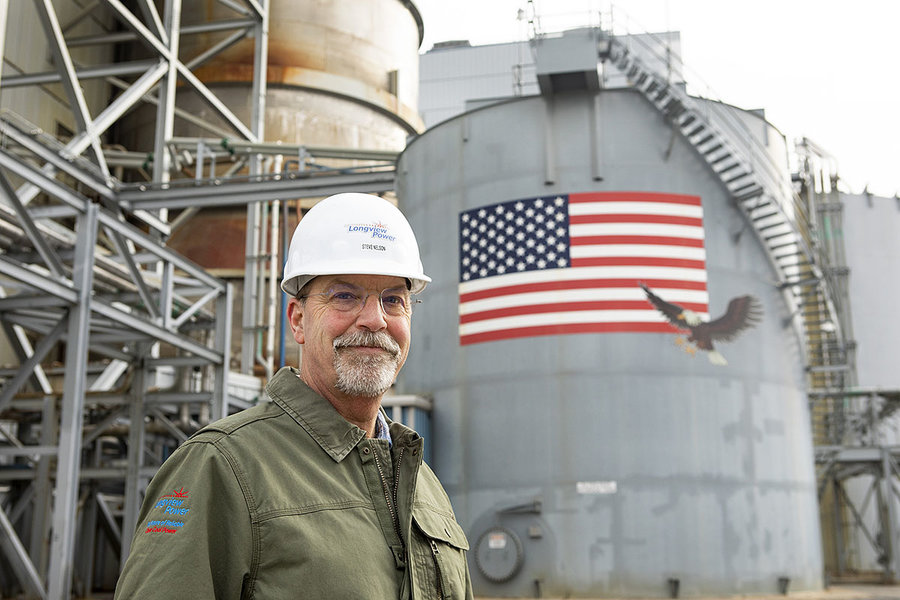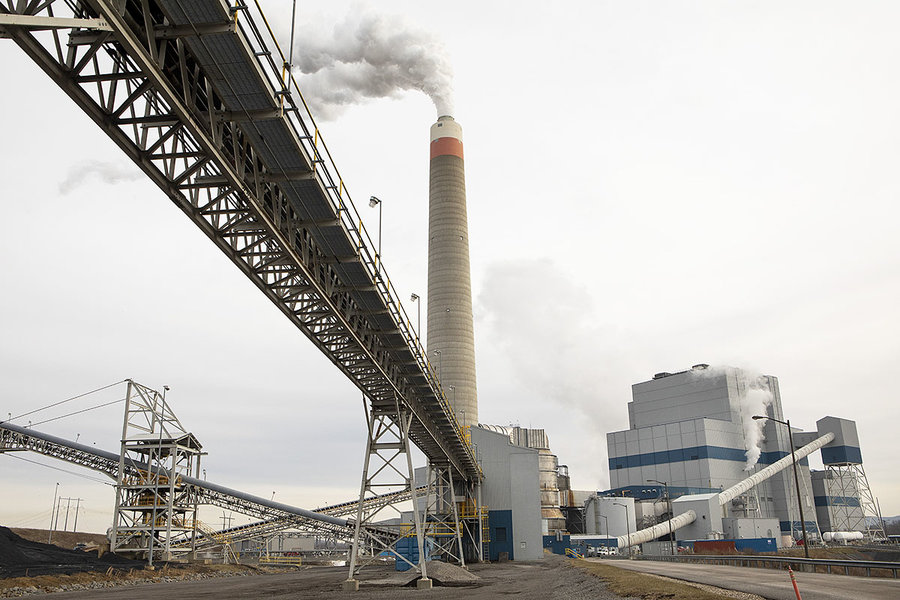West Virginia's Coal Culture Runs Deep. It Is Also Evolving

By Laurent Belsie
March 27, 2020 - Walking on the two-lane road that loops behind the Longview plant – West Virginia’s newest and cleanest coal-fired power facility – Steve Nelson and his boss had what he describes as a “slow epiphany.”
“Why fight with this?” he recalls asking about the relentless competition from natural gas. Now, on the same road where that discussion took place two years ago, he shows off where Longview Power, an independent power producer, plans to build a natural gas-fired facility as well as a solar-power installation.

Steve Nelson, Chief Operating Officer of Longview Power
Photo: Melanie Stetson Freeman/Staff
It’s a diversification that the rest of the state has yet to make. While the nation is moving rapidly away from coal power, West Virginia remains firmly committed to it. Some 92% of its electric power still comes from burning the black mineral.
The inertia is partly political. The coal industry remains a powerful force statewide. It’s also cultural. For more than 200 years, ever since workers mined coal to fire evaporation furnaces to create salt near Charleston, the future state capital, West Virginia and this fossil fuel have been inextricably linked. By clinging to coal, local politicians hope to avoid further losses of coal jobs, one of the few high-paid jobs in a state with the third-highest unemployment rate in the nation. But that choice is also holding back a transition that could lead to the arrival of new industries and jobs.
“The big thing is culture. It’s just a source of great pride in West Virginia that the United States industrialized on the backs of the coal miners,” says James Van Nostrand, a law professor at West Virginia University in Morgantown and author of an upcoming book, “Coal Trap: How West Virginia was Left Behind in the Clean Energy Revolution. “In this state we tend to think that what is good for the coal industry is what is good for everybody.”

Steam rises from a smokestack at Longview Power, a coal-powered energy plant, on Jan. 23, 2020, in Maidsville, West Virginia.
Photo: Melanie Stetson Freeman/Staff
Even today, as markets for West Virginia coal dry up in surrounding states, the industry is sounding confident.
“I’m not prepared to concede that we are not part of the future,” says Chris R. Hamilton, senior vice president of the West Virginia Coal Association in Charleston. He points to a rise in coal exports, mostly powered by metallurgical coal, the type used to create steel. There are also experiments underway to turn coal into liquids, such as diesel fuel, and solids, such as carbon steel. And as the prospects dwindle for selling West Virginia thermal coal, used to create electricity, to other states, some say the argument to keep using coal for West Virginia’s electricity grows stronger.
For his part, President Donald Trump has tried mightily to prop up coal sales by rolling back environmental restrictions that constituted what many in the industry called a war on coal. Since he took office, the industry has bounced back from its lows during the Obama administration and stabilized.
But there’s only so much the president can do. There’s little hope that thermal coal will grow. When West Virginia Gov. Jim Justice, a coal business owner himself, asked Appalachian Power to burn more coal three years ago, the company’s president reportedly rejected the idea. It’s far cheaper to build new natural gas plants than coal-fired plants. And West Virginia happens to sit atop the nation’s largest shale gas deposits. (It is moving to drill those deposits, but for now is sending that energy to utilities in other states rather than taking advantage of the cheap fuel to generate electricity itself.)
And there are costs involved with continuing to prop up coal. One is electricity costs. Between 2008 and 2017, West Virginia saw its electricity costs soar 6% per year, the fastest increase of any state, according to a 2019 McKinsey report. That rise has blunted a key advantage West Virginia once had in attracting new industries. Now, instead of sporting the third-lowest power costs in the nation, it ranks 21st.
The other cost is environmental. Increasingly, big companies are demanding that their power come, at least in part, from renewables.
“We definitely see the need for renewable power,” says Jeri Matheney, a spokeswoman for Appalachian Power, one of the state’s two major utilities. “Some investors are looking for renewable power when they look for locations to place their business.”
By 2033, the utility expects to rely on solar to produce 11% of its electricity, up from essentially zero today, while its reliance on coal would fall slightly. Even so, coal would still provide nearly three-quarters of the power for the utility, which also serves Virginia. The company has three big coal-fired power plants in West Virginia and expects to continue to use them for the next 20 years, Ms. Matheney says.
“It’s not just the Amazons” looking for cleaner power, says Mr. Van Nostrand of West Virginia University. “It’s Procter & Gamble, Toyota. ... We need to get away from being a coal state and become an energy state.”
“It’s zero-sum-game thinking,” says Mr. Nelson, back at the Longview plant. In reality, natural gas may provide more economic opportunity than what is lost by the coal industry. And “the clock is ticking.” Those aging coal plants will eventually have to be replaced anyway. By the time they are, he adds, West Virginia may have lost permanently its role as an exporter of electric power.

